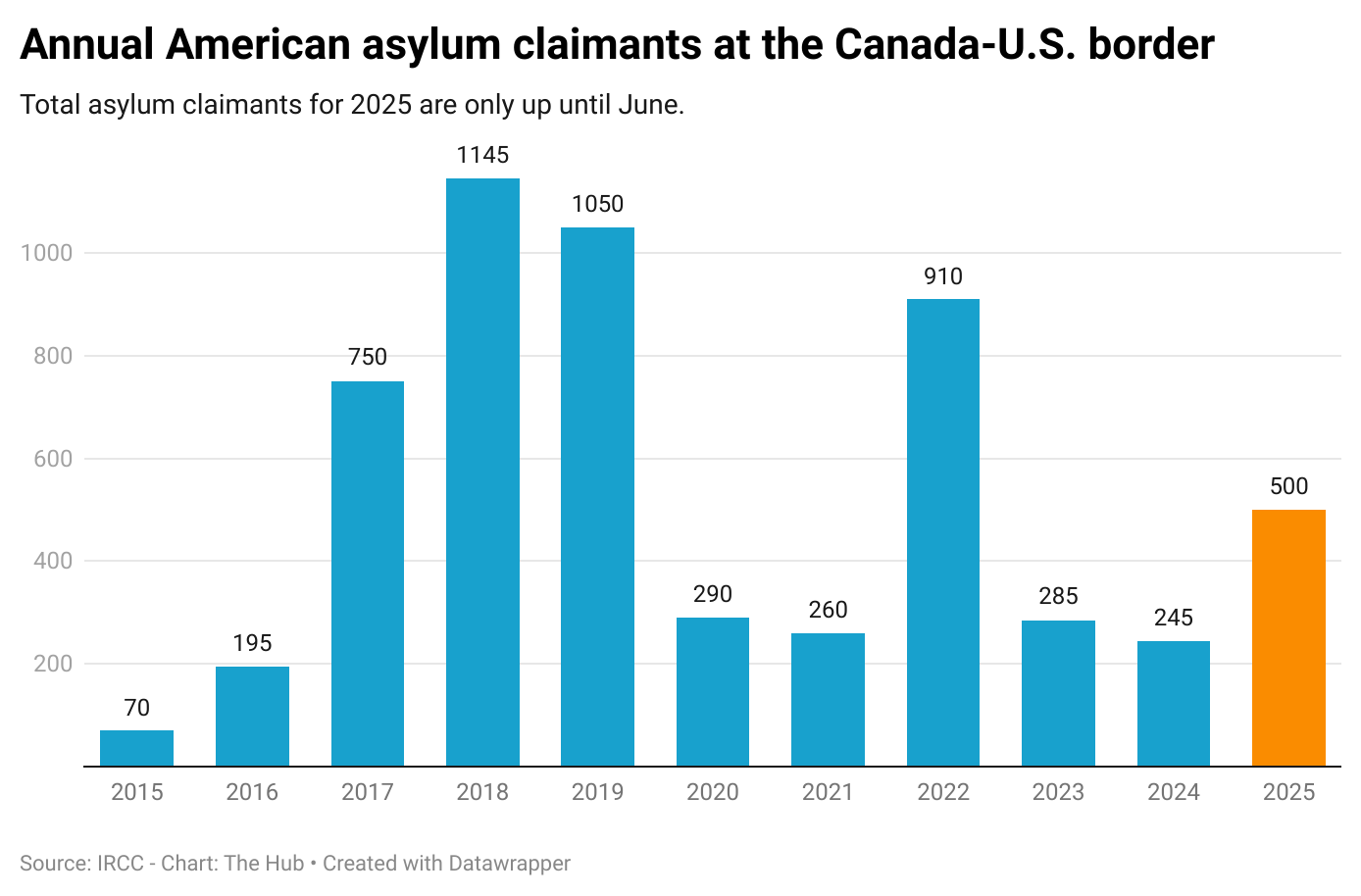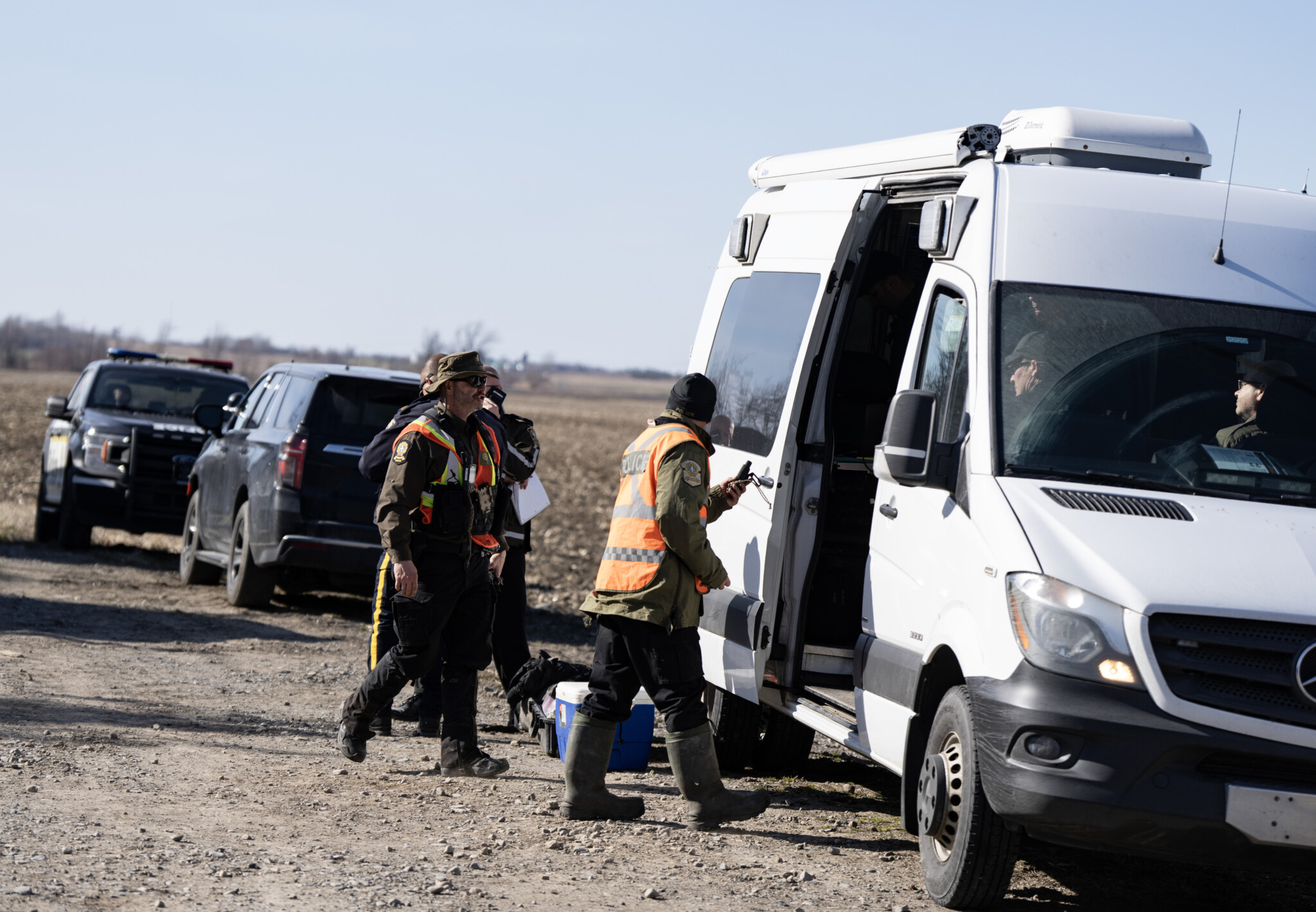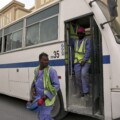Americans are now the second-most common nationality seeking refugee status at the Canada-U.S border.
According to data obtained by The Hub from the Canada Border Services Agency (CBSA), only Haitians have filed more asylum claims at Canada’s border crossings so far this year. U.S. citizens moved from ninth place in 2024 to second place as of mid-August 2025.
“The United States is currently the second-most common country of citizenship as of August 18, 2025,” CBSA spokesperson Rebecca Purdy confirmed to The Hub.
This year so far marks the first time that Americans have ranked as high as second for asylum claimants processed by CBSA at the Canada-U.S. border for at least the past decade, based on the data obtained by The Hub.
The overall number of American asylum claims—including those made at land crossings, airports, inland claims, and marine ports—reached 745 by the end of June, according to the most current dataset provided by Immigration, Refugees and Citizenship Canada. In 2024, there were 700 claims. In 2023, it was 670.
Going back to 2015, only 175 American citizens claimed asylum with Canada. But by 2017, at the start of U.S. President Donald Trump’s first term, the total number of American asylum seekers jumped to 2,535. It remained elevated before the COVID-19 pandemic, with 1,680 and 1,495 claims in 2018 and 2019 respectively.
These cases often include American-born children of parents from other nationalities.

“One possibility [is when] an asylum seeker, let’s say from Venezuela, has spent some time in the U.S. and has one or two U.S.-born children and [flees with them to Canada], they count as U.S. asylum seekers. So you have one Venezuelan and two U.S. citizens,” Toronto-based refugee lawyer Maureen Silcoff explained to The Hub. “In the past, that has accounted for most of the U.S. asylum seekers in the system.”
Of asylum claims made at Canada-U.S. land border crossings, Haitians remain the top nationality, followed by Americans, then Venezuelans, Colombians, Pakistanis, Chileans, Romanians, Nicaraguans, Mexicans, and Afghans.
The flow of U.S. claimants fits within a longer history of Americans crossing north to escape political conditions at home—from Loyalists during the American Revolution, to slaves using the Underground Railroad, to Vietnam War draft dodgers. In 2025, however, most appear to be children caught up in the flight of undocumented families fearing detention and deportation by the U.S. Immigration and Customs Enforcement.
So far in 2025, CBSA has deemed 2,006 refugee claimants at the Canada-U.S. border crossings ineligible under the Safe Third Country Agreement (STCA), sending them back to the U.S. Of these claimants, the number of American citizens sent back to the U.S. wasn’t available in the dataset provided.








